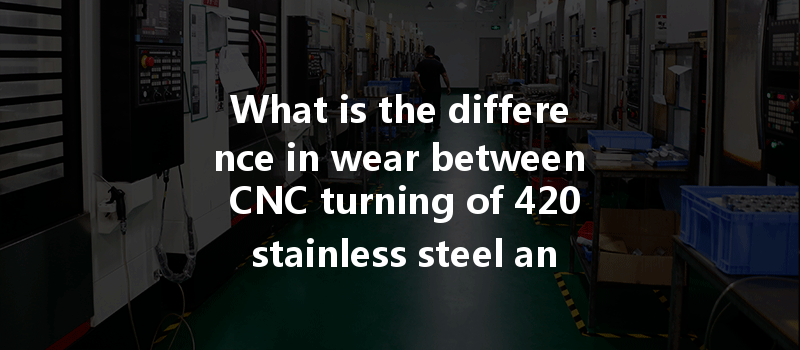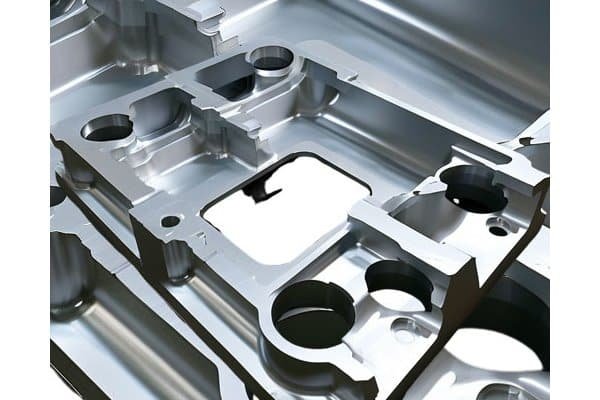Opening
Did you know that the choice of material for manufacturing critical parts can ultimately determine their lifespan and performance in various applications? This is especially true in the CNC machining world, where precision and durability are paramount. Amongst various materials available, stainless steel has earned its reputation due to its corrosion resistance and mechanical strength, particularly 420 and 440C grades. But what exactly are the differences in wear resistance between these two commonly used stainless steels in CNC turning? This blog will unravel this key question while covering in-depth details to assist engineers and machinists in selecting the best material for their projects.
to Stainless Steel Grades
Before we delve into the impacts of CNC turning on the wear characteristics of 420 and 440C stainless steel, it is crucial to understand the fundamental properties that define these materials.
What is 420 Stainless Steel?
420 stainless steel is a martensitic stainless steel known for its excellent wear resistance, high strength, and moderate corrosion resistance. It is often used in applications requiring moderate levels of corrosion resistance, strength, and excellent hardenability. Its chemical composition typically includes:
What is 440C Stainless Steel?
440C stainless steel, on the other hand, is a high-carbon martensitic stainless steel that offers enhanced hardness and wear resistance compared to
The CNC Turning Process
CNC turning is a pivotal process in manufacturing, where a material is rotated against a stationary cutting tool. This operation not only shapes the material but also affects its surface finish and material properties. Understanding how machining processes interact with various materials is vital for achieving desired results.
Understanding Wear Resistance
Wear resistance is a material’s capability to withstand wear from constant friction and contact with other materials. In CNC turning, wear can be attributed to several factors, including:
Comparing Wear Resistance: 420 vs. 440C Stainless Steel
Hardness and Wear Resistance
The primary difference between 420 and 440C stainless steel in terms of wear is hardness. After proper heat treatment, 440C can reach hardness levels of 58-60 HRC, whereas 420 typically achieves about 50-54 HRC. This difference in hardness contributes significantly to their wear resistance capabilities:
Manufacturing Implications

Machinability is another critical factor to consider when comparing these two grades:
Surface Finish
The surface finish achieved through CNC turning directly impacts the wear characteristics of both materials. A smoother surface can help reduce friction and improve longevity. Given its higher hardness, 440C may require more precise techniques for achieving favorable surface finishes during CNC turning.
Wear Testing in Real-World Applications
Field testing has shown that components made from 440C stainless steel exhibit significantly lower wear rates compared to 420 stainless steel. Industries such as automotive, aerospace, and medical devices often turn to 440C for critical components where durability and longevity are non-negotiable.
A Detailed Solution Approach for CNC Machining
Optimizing the Machining Parameters
Achieving the best performance while machining 420 and 440C requires adjustments in the machining parameters based on the desired outcome:
Tool Selection
The choice of tool material is critical in CNC turning to mitigate wear and provide consistent results:
Post-Machining Treatment
After CNC turning, surface treatments such as polishing or coatings can further protect against wear and improve corrosion resistance for both grades, enhancing their lifespan.
Real-World Application Examples
The decision between using 420 or 440C stainless steel often comes down to specific application requirements:
In summary, understanding the differences between 420 and 440C stainless steel and their wear characteristics under the CNC turning process is crucial for industries requiring precision and durability. While both grades provide robust options, 440C often outperforms 420 in wear resistance due to its superior hardness.
Whether you’re a seasoned engineer or a newcomer to CNC machining, knowing which material to select can dramatically impact product performance and longevity. Reflect on your project’s specific demands, and choose wisely between 420 and 440C stainless steel. The choices you make today can shape the efficiency and reliability of your designs for years to come.
Importance of Continuous Learning
This blog serves as a reminder of the significance of material selection in manufacturing. As technology evolves, so does the array of available materials and techniques. Being informed enables you to leverage the best practices and technologies to ensure top-tier production quality—a pursuit every engineer and machinist should prioritize.
By continuously seeking knowledge in areas such as CNC machining and materials science, you can not only enhance your skills but also contribute to creating more efficient, lasting products that meet the demands of an ever-evolving marketplace.






